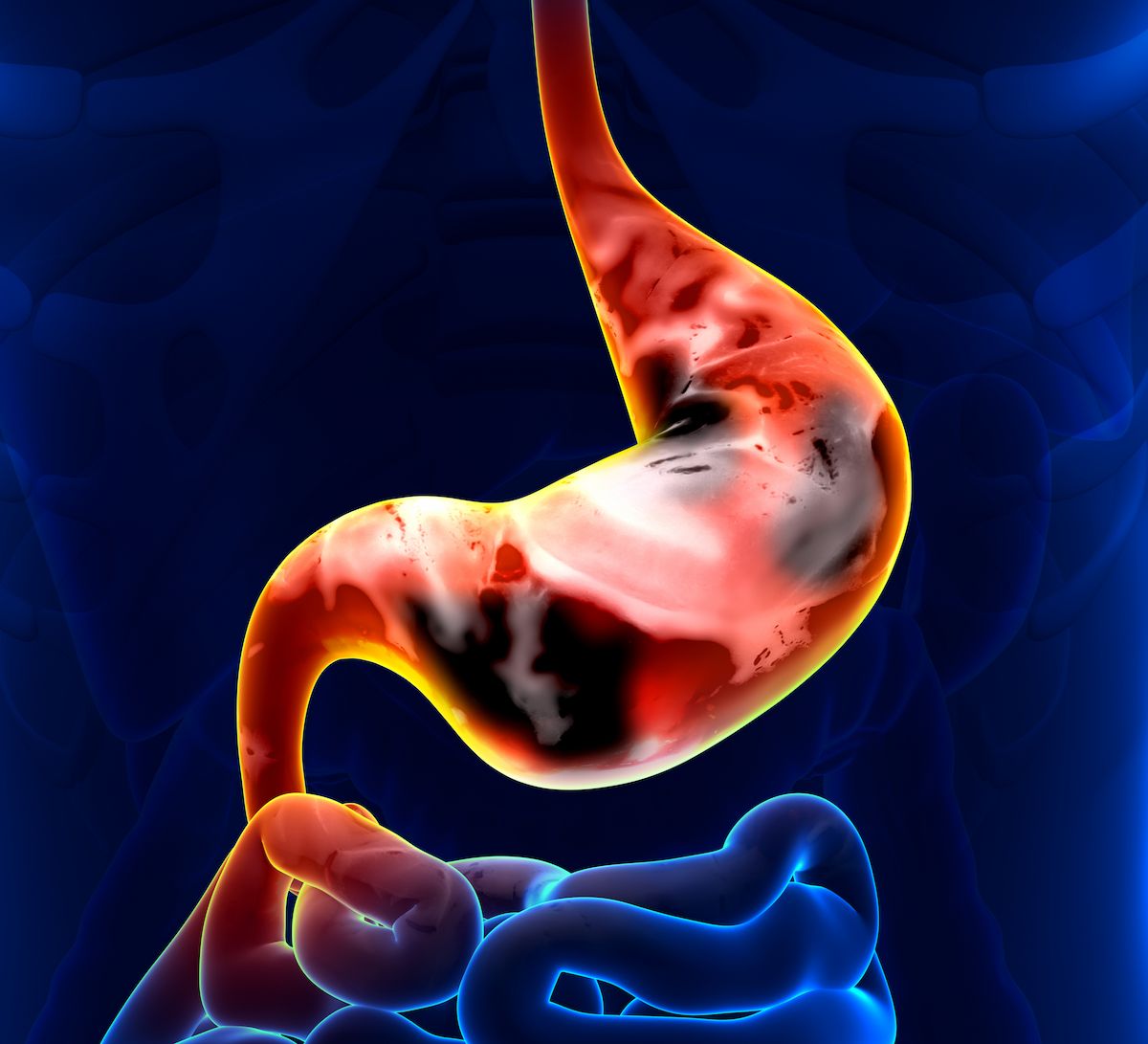Pembrolizumab Improves Responses but Not EFS in Locally Advanced Gastric Cancer
Investigators indicate that, although treatment with adjuvant/neoadjuvant pembrolizumab results in an absolute decrease in risk of an event, the benefit was not statistically significant in those with untreated, locally advanced gastric/GEJ cancer.
The median event-free survival (EFS) was 44.4 months (95% CI, 33.0-not reached [NR]) in the pembrolizumab arm compared with 25.3 months (95% CI, 20.6-33.9) in the placebo arm (HR, 0.81; 95% CI, 0.67-0.99; P = .0198), which did not meet the criteria for significance (P = .0178). Additionally, the 24-month EFS rate was 58% (95% CI, 53%-63%) vs 51% (95% CI, 45%-56%) in each respective group.

Both neoadjuvant and adjuvant pembrolizumab (Keytruda) improved the rate of pathologic complete responses (pCRs) over placebo in those with untreated, locally advanced, resectable gastric or gastroesophageal cancer, according to data from the phase 3 KEYNOTE-585 study (NCT03221426); however, investigators noted that this did not result in an improvement in event-free survival (EFS).
The study included a total of 804 patients were randomly assigned to the main cohort 402 of whom were treated with pembrolizumab and cisplatin-based chemotherapy; 402 received placebo plus cisplatin-based chemotherapy; and 203 were treated with fluorouracil, docetaxel, and oxaliplatin (FLOT). Among those treated with FLOT, 100 received FLOT plus chemotherapy and 103 received FLOT plus placebo.
The pCR rate was 12.9% (95% CI, 9.8%-16.6%) in the pembrolizumab/cisplatin-based chemotherapy cohort and 2.0% (95% CI, 0.9%-3.9%) in the placebo/chemotherapy cohort (P <.0125). Moreover, the pCR benefit appeared to be consistent across the majority of prespecified subgroups. The pCR rate was 13.0% (95% CI, 10.2%-16.3%) in the pembrolizumab group vs 2.4% (95% CI, 1.3%-4.2%) in the placebo group within the main/FLOT cohort.
In total, 49% of patients had died at the time of by the third interim analysis, including 45% in the pembrolizumab/chemotherapy cohort and 53% in the placebo cohort. Additionally, the main/FLOT group 48% of patients had an event or died.
The multicenter, randomized trial was performed at 143 centers across 24 countries and included patients aged 18 years or older with previously untreated, locally advanced, resected disease. Patients also needed to have an ECOG performance status of 0 to 1, a life expectancy of 6 months or more, and adequate organ function.
Exclusion criteria included those with an autoimmune disease necessitating systemic therapy, a history of or active non-infectious pneumonitis necessitating steroids, diagnosis of immunodeficiency, or an active infection that needs systemic treatment.
Patients were randomly assigned 1:1 to be treated with either neoadjuvant pembrolizumab at 200 mg or placebo intravenously on day 1 of each cycle plus chemotherapy and either adjuvant pembrolizumab or placebo/chemotherapy every 3 weeks. The chemotherapy regimen consisted of 80 mg/m2 of intravenous cisplatin on day 1 of each cycle plus 1000 mg/m2 of oral capecitabine twice a day on days 1 to 14 of each cycle or 800 mg/m2 of intravenous fluorouracil per day on days 1 to 5 of each cycle.
After surgery, patients received adjuvant pembrolizumab at a dose of 200 mg or single-agent placebo every 3 weeks for 11 cycles. Patients were stratified based on region, tumor stage, and capecitabine or fluorouracil plus cisplatin vs FLOT chemotherapy.
The median event-free survival (EFS) was 44.4 months (95% CI, 33.0-not reached [NR]) in the pembrolizumab arm compared with 25.3 months (95% CI, 20.6-33.9) in the placebo arm (HR, 0.81; 95% CI, 0.67-0.99; P = .0198), which did not meet the criteria for significance (P = .0178). Additionally, the 24-month EFS rate was 58% (95% CI, 53%-63%) vs 51% (95% CI, 45%-56%) in each respective group.
In the main/FLOT group, the median EFS was 45.8 months (95% CI, 35.9-NR) among those treated with pembrolizumab vs 25.7 months (95% CI, 21.9-33.9) in the placebo group (HR, 0.81; 95% CI, 0.68-0.97). Additionally, the 24-month EFS rate in each respective arm was 60% (95% CI, 55%-64%) vs 52% (95% CI, 47%-56%).
Reference
Shitara K, Rha SY, Wyrwicz L, et al. Neoadjuvant and adjuvant pembrolizumab plus chemotherapy in locally advanced gastric or gastro-oesophageal cancer (KEYNOTE-585): an interim analysis of the multicentre, double-blind, randomised phase 3 study. Lancet. Published online December 19, 2023. doi:10.1016/S1470-2045(23)00541-7